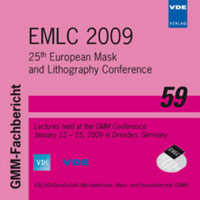Sub-30 nm defect removal on EUV substrates
Conference: EMLC 2009 - 25th European Mask and Lithography Conference
01/12/2009 - 01/15/2009 at Dresden, Germany
Proceedings: EMLC 2009
Pages: 6Language: englishTyp: PDF
Personal VDE Members are entitled to a 10% discount on this title
Authors:
Rastegar, Abbas; Eichenlaub, Sean; Kadaksham, Arun John; House, Matt (SEMATECH, 257 Fuller Road, Suite 2200 Albany, NY 12203)
Cha, Brian (Samsung assignee at SEMATECH)
Yun, Henry (Intel assignee at SEMATECH)
Abstract:
Naturally occurring sub 30 nm defects on quartz and Low Thermal Expansion Material (LTEM) substrates were characterized by using Atomic Force Microscope(AFM). Our data indicates that a majority of defects on the incoming substrate are hard defects including large, flat particles with a height less than 5 nm, tiny particles with a size of 10 nm to 30 nm SEVD and pits with a depth of about 9 nm. All the soft particles added by handling with sizes of >50 nm can be removed with a single cleaning process. At least four cleaning cycles are required to remove all of the remaining embedded particles. However, after particle removal in their initial location a shallow pit remains. Based on detailed characterization of defect and surface by AFM, we propose that these hard particles are added during the glass polishing step and therefore it is important to revisit the glass Chemical Mechanical Polishing (CMP) processes and optimize them for defect reduction. A qualitative value for particle removal efficiency (PRE) of >99% was obtained for 20 nm Poly Styrene Latex Sphere (PSL) deposited particles on surface of glass.


